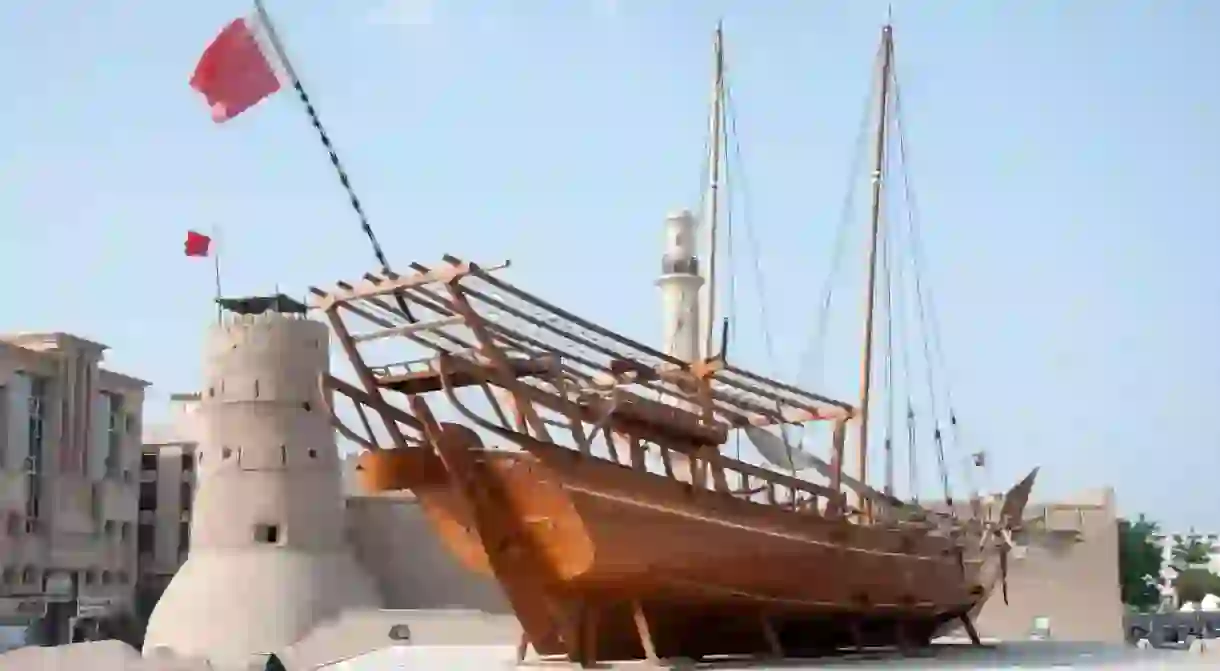The Best Museums To Visit in Dubai

Dubai has roots dating back thousands of years – back to when Bedouin traders would stop off to rest beside Dubai Creek – and the emirate’s diverse museums provide a great way to learn this history. Today, there is an ever-growing number of museums in Dubai, ranging from traditional history museums to art galleries and private collections now open to the public.
Dubai may be the Middle East’s most modern state, but that does not mean that museums are in short supply – far from it. Whether you are looking to learn about the history of Dubai, emerging from centuries as a small trading post to the luxurious city of today, or about the pearling industry that brought immense wealth to the trading families of the emirate, the city’s variety of museums span all interests and ages.
Etihad Museum
Museum

Salsali Private Museum
Museum
Naif Museum
Museum
Inside an old fort in Deira that was once the first headquarters of Dubai’s police and a prison, the Naif Museum offers a flavour of old Dubai. Constructed in 1939, the museum details the development of the Dubai police force and justice system. It is a small but well-formed museum that displays old police uniforms, weapons, original photographs and medals awarded to police officers throughout Dubai’s modern history. Admission to the museum is free.
Dubai Museum
Museum

Saruq Al-Hadid Archaeology Museum
Museum
Showcasing artefacts found in one of the most important historical sites in Dubai, the Saruq Al-Hadid Archaeology Museum was established by the ruler of Dubai, Sheikh Mohammed bin Rashid Al Maktoum, who discovered the Iron Age site from his helicopter. Located in the Shindagha district, this archaeological museum displays metal brooches and utensils, animal bones and jewellery in several rooms dedicated to the settlement on which Dubai was built. Entry is 20 dirhams (£4.32) for adults and 10 dirhams (£2.16) for children.
Coffee Museum
Museum

Al Shindagha Museum
Museum

Located beside Dubai Creek – the oldest part of Dubai where early traders arrived and set up home – the Al Shindagha Museum immerses visitors in the culture and history of the Emirates and the wider Middle East. The museum, which received its patronage from the ruler of Dubai, is divided into sections that focus on specific elements of Emirati life. These include a room dedicated to the story of Dubai Creek, documenting the opening of the first bank, police station and market, boat building and a room focusing on Emirati perfume-making and its special place in Emirati culture. Tickets for the museum should be booked online before visiting.
Pearl Museum
Museum
Inside the headquarters of the Emirates NBD, in the Deira district, the Pearl Museum documents how the pearling industry brought wealth to Dubai for centuries. Sultan Al Owais, Dubai’s most important philanthropist, poet and pearl merchant, collected and donated the precious pearls on display in the museum. Entrance to the museum is free, and be prepared for security checks.
Coins Museum
Museum

Dubai’s Coins Museum is dedicated to the money that the city has used for centuries. Visitors to the Al Fahidi Historical Neighbourhood could easily miss the unassuming museum facade, but inside, they will find several display cabinets filled with coins and banknotes that will take them on a journey through Dubai’s numismatic history. Spread across eight rooms, 470 rare coins from different historical periods, from ancient Egypt to the British Empire, detail the development of finance in the Emirates. The free-to-enter museum is also home to 16 rare Arab-Sasanian dirhams used during the Rashidun and Umayyad Caliphates (around AD 632-750).
Majlis Ghorfat Umm Al Sheif
Museum
The former summer home of Sheikh Rashid bin Saeed Al Maktoum, the former ruler of Dubai and the second prime minister of the UAE, Majlis Ghorfat Umm Al Sheif is a traditional gypsum and coral house just off Jumeirah Beach. The house is a rare example of a preserved Arab building with a natural ventilation system, with a roof that was styled for drying dates and outdoor sleeping. The rooms have been decorated with authentic carpets, pottery and lanterns.
This is an updated version of a story created by Thais Kelly.













